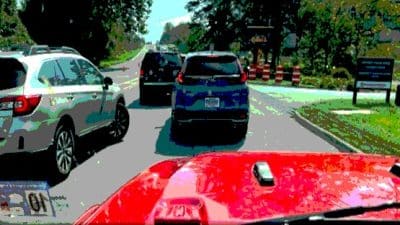
In the process of gathering this information, they will often base their premiums on a number of factors – and believe it or not, your own driving record or history is actually just one factor. And as the title of this article demonstrates, race and ethnicity may actually play a bigger role in your car insurance premium than your own driving record.
The Actuarial Tables
The actuarial tables are not a clean and neat spreadsheet that anyone can see for themselves. Analysts pore over mountains of data about various policyholders and look at risk rates for drivers of various personas.
The tables help set premiums for policyholders all across the country, and the truth is these tables are not blind – they essentially have a bias toward certain drivers based on socioeconomics, geography and even race and gender.
Yes, you and your neighbor may have the exact same driving record in the exact same location, but your neighbor could pay less if he or she is a different age, gender, race or socioeconomic status as you are. By the same token, a person in a worse neighborhood (actuarially speaking) than you but the same gender or race may have a cleaner driving record and yet pay the same rates as you.
It is all about risk management, and actuaries have a talent for pinpointing the best risks and thus can find places to offer better insurance rates and still make a lot of profit.
The Asian Driver Stereotype
An example of this racial bias comes with cultural differences and stereotypes, including the stereotypical “Bad Asian Driver.” Is this stereotype truly accurate though?
First of all, we have to address from where the stereotype comes. One source, an Asian himself, noted that driving is a two-pronged exercise featuring skill and attitude. First generation Asian migrants into Western driving society seem to suffer from attitude issues, rather than necessary skills.
Skills in driving can be learned, as can learning the rules of the road. Asians are well-documented in being very intelligent, so it’s not reasonable to think that Asians are bad drivers because they don’t know how to drive. The all comes down to attitude when driving.
In other words, the Western world is much more spread out and less congested than in Asian countries. With Asian cities so densely populated and so many cars on top of each other, Asian drivers tend to develop a more aggressive attitude toward driving – courtesy goes out the window and it’s every man or woman for him or herself. That attitude is often hard to de-program in a Western world where drivers are generally more courteous and patient.
We tell you about this stereotype to give you this fact, specifically – Asian are actually very skillful drivers. Statistics show that Asian drivers, as a group, are actually the safest on the roads in America, with a fatality rate at least three times lower than any other ethnic group. Asians average about four deaths for every 1000,000 people. Whites, Hispanics, and blacks then follow at around 12 per 100,000 each. The most dangerous group is American Indians at nearly 32 deaths per 100,000.
Facts about Race and Driving
Here is the honest truth – where you live in a neighborhood does factor into your premiums. If you live in a ZIP code that is a majority of one race while you are another, your rates will be similar to the majority regardless of your driving history.
Research found that many of the major auto insurers seem to take a rather racially-biased view on geography when it comes to setting premiums for all drivers in a particular region. As an example, the research found that in ZIP codes where blacks were more predominant in the population, the good drivers in that ZIP code were being charged as much as 70 percent more than similar drivers in predominantly-white ZIP codes. This did not take into account the race of the good drivers; it only considered their location.
This is certainly an interesting finding, especially when the previous statistic cited above showed that whites and blacks had very similar fatality rates of just north of 12 deaths per 100,000 population. This seems to suggest a socioeconomic perspective to the data to explain the discrepancy. Yet, the data showed that it may not be about socioeconomics – even in upper-middle and upper-class ZIP codes, predominantly-black neighborhoods still pay significantly more in premiums than those white ZIP codes that are of the same socioeconomic stratum.
That does seem to then beg the question about Asian auto-insurance rates – whether they are good or bad drivers (based on believing the stereotype or the statistics), it is often believed that Asians will more likely live in predominantly-white ZIP codes. This may explain at least part of Asians having lower auto-insurance rates, along with their known better driving records.
Translating into the Premiums
Let’s take this information and boil it down to the bottom line. Does it matter in general of your race when it comes to the rates we all pay for our auto insurance?
As actuaries love to say “it depends” and include a laundry list of factors, the data shows that yes, we can generalize auto insurance rates based on a racial component as well as driving records. All we have to do is look at the breakdown of premiums on an overall average and by race.
What you can find is that on average, auto insurance premiums for all drivers comes out to just north of $900 per year, or about $75 per month. If we were to break that out into racial categories, the average Asian driver in the U.S. is actually paying an annual premium of about $815 per year, or $68 per month – 10 percent less than the average U.S. driver.
While Asians do make up a small percentage of the overall population, having their rates be so much lower than average has to mean that other ethnic groups pay more than the average. But how much, you ask? With whites and blacks making up a larger percentage of the population, in order to make up for the Asian “discount,” whites and blacks will indeed have to pay more on average for their premiums.
The data of course bears this out. As the concentration of black population rises in various ZIP codes, insurance companies charge more and more – in ZIP codes where the black population is less than 25 percent of the total, the insurance rate is lower than the national average but every percentage above that will be higher premiums than the national average. The most predominantly-black neighborhoods will be charged as much as two-thirds more than the national average, regardless of the income level off that neighborhood.
In simple terms, the “very” white neighborhoods (where blacks make up less than 25 percent of the population) seem to be those which have lower rates than the national average. But not by much. So most white and black drivers in effect pay more for car insurance than their Asian brethren across the board.
Now you know. Asians are better drivers, and they have the car insurance rates to back it up.










